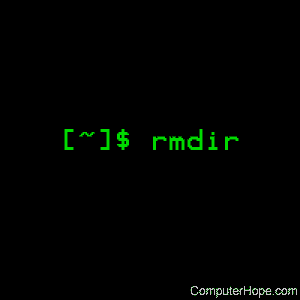Linux rmdir command

On Unix-like operating systems, the rmdir command removes empty directories from a filesystem.
This page describes the GNU/Linux version of rmdir.
Description
The rmdir command removes each directory specified on the command line, if they are empty. That is, each directory removed must contain no files or directories, or it cannot be removed by rmdir.
If any specified directory is not empty, rmdir will not remove it, and will proceed to try and remove any other directories you specified.
Directories are processed in the order you specify them on the command line, left to right.
To remove both a parent directory and a subdirectory of that parent, the subdirectory must be specified first, so the parent directory is empty when rmdir tries to remove it. (Or you can use the -p option; see below.)
rmdir is functionally equivalent to the command rm -d.
To remove a directory that is not empty (and also remove everything it contains), you can use the rm command with the -r (recursive) option. See the rm command for more information.
Syntax
rmdir [-p] [-v | --verbose] [--ignore-fail-on-non-empty] directory ...
rm --help
rm --version
Options
| -p | Each directory argument is treated as a pathname of which all components will be removed, if they are empty, starting with the last component. (See rm for fully non-discriminant recursive removal.) |
| -v, --verbose | Display verbose information for every directory processed. |
| --ignore-fail-on-non-empty | Do not report a failure which occurs solely because a directory is non-empty. Normally, when rmdir is instructed to remove a non-empty directory, it reports an error. This option suppresses those error messages. |
| --help | Display a help message, and exit. |
| --version | Output version information, and exit. |
Examples
Remove the directory mydir, if it's empty.
rmdir mydir
rmdir dir1 dir2 dir3
Remove the directories dir1, dir2, and dir3, if they are empty. If any are not empty, an error message will be printed for that directory, and the others will be removed.
rmdir dir/subdir dir
Remove the directory dir/subdir if it's empty. Then, remove directory dir, if it's empty after dir/subdir was removed.
rmdir -p dir/subdir
Same as the above command. rmdir attempts to remove dir/subdir, then attempts to remove dir.
